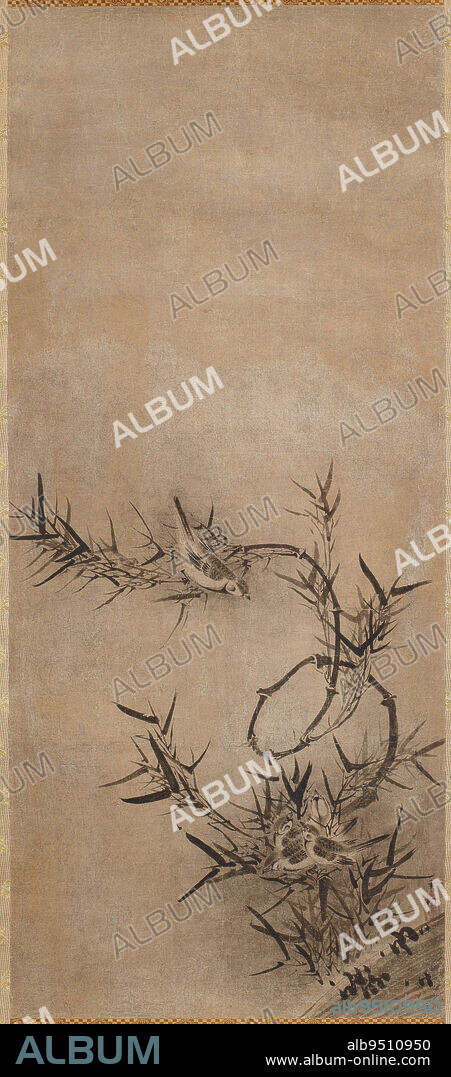alb9510950
Five Sparrows on Bamboo, 16th century, Traditionally attributed to Sesson Shkei, Japanese, 1504 - 1589, 37 1/2 × 16 1/8 in. (95.25 × 40.96 cm) (image)71 5/8 × 21 5/8 in. (181.93 × 54.93 cm) (mount), Hanging scroll; ink on paper, Japan, 16th century, In the 1500s and 1600s Japanese painters created works inspired by the Chinese Zen monk-painter Muqi Fachang (active c. 1210after 1269). Sometimes they painted in his style, and other times they painted subjects associated specifically with him. This painting does both: the subject matter and the painting style hearken back to Muqi. Japans military rulers owned a painting of sparrows on bamboo by Muqi. This painting became well known because it was copied and distributed widely. Japanese people came to associate this subject with Muqi.

|
Ajouter à une autre Lightbox |
|
Ajouter à une autre Lightbox |



Avez-vous déjà un compte? S'identifier
Vous n'avez pas de compte ? S'inscrire
Acheter cette image

Légende:
Voir la traduction automatique
Five Sparrows on Bamboo, 16th century, Traditionally attributed to Sesson Shkei, Japanese, 1504 - 1589, 37 1/2 × 16 1/8 in. (95.25 × 40.96 cm) (image)71 5/8 × 21 5/8 in. (181.93 × 54.93 cm) (mount), Hanging scroll; ink on paper, Japan, 16th century, In the 1500s and 1600s Japanese painters created works inspired by the Chinese Zen monk-painter Muqi Fachang (active c. 1210after 1269). Sometimes they painted in his style, and other times they painted subjects associated specifically with him. This painting does both: the subject matter and the painting style hearken back to Muqi. Japans military rulers owned a painting of sparrows on bamboo by Muqi. This painting became well known because it was copied and distributed widely. Japanese people came to associate this subject with Muqi.
Personnalités:
Crédit:
Album / quintlox
Autorisations:
Modèle: Non - Propriété: Non
Questions sur les droits?
Questions sur les droits?
Taille de l'image:
3732 x 8478 px | 90.5 MB
Taille d'impression:
31.6 x 71.8 cm | 12.4 x 28.3 in (300 dpi)
Mots clés:
16E SIECLE • 16EME S • ART, PEINTURE • BAMBOO • BAMBOU • JAPONAIS • JAPONAISE • PEINTURE • SEIZIÈME SIÈCLE • SESSON SHKEI • STYLE • TABLEAU • TABLEAUX • XVIE SIECLE
 Pinterest
Pinterest Twitter
Twitter Facebook
Facebook Copier le lien
Copier le lien Email
Email
